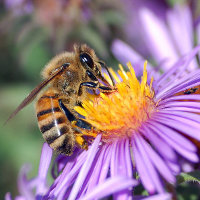Sweet Cicely (Myrrhis odorata (L.) Scop.)
Also known as cicely, myrrh, garden myrrh, sweet chervil, anise.
↑Range - Expand
| Legend | Color |
| Introduced or Not Present | |
| Introduced |
This tentative map is based on our own research. It may have limited data on Canada and/or Mexico, and there is some subjectivity in our assignment of plants as introduced vs. expanded. Read more in this blog post.
Although this plant occurs somewhere in each of these regions, it may only occur in a small part of some or all of them.
↑Notes
The common names of this species are unfortunately highly problematic.
We recommend against using the common name "anise" to refer to this species, in spite of the fact that the USDA uses this name; this species is not the commonly used spice anise, which instead is made from anise (Pimpinella anisum). Similarly, we recommend against the use of the term "myrhh" to refer to this species, in spite of the fact that it corresponds to its genus; the term "myrhh" more-frequently refers to the gum resin extracted from plants of the Commiphora genus, which does not occur anywhere in the wild in North America.
The term "sweet chervil" is also confusing, as "chervil" typically refers to garden chervil (Anthriscus cerefolium).
Although the term "sweet cicely" can refer to native plants of the Osmorhiza genus, such as aniseroot (Osmorhiza longistylis) or aniseroot (Osmorhiza longistylis), we found it to be the least-ambiguous term, since its use to refer to this species is much older, and it is most-frequently used to refer to it.
↑Links & External Resources
• Myrrhis odorata (anise) | USDA PLANTS Database (About This Site)
• Myrrhis odorata | Go Botany (About This Site)
• Myrrhis odorata (Sweet Cicely) | Missouri Botanical Garden Plant Finder (About This Site)
• Myrrhis odorata | Biota of North America Project (BONAP) (About This Site)


